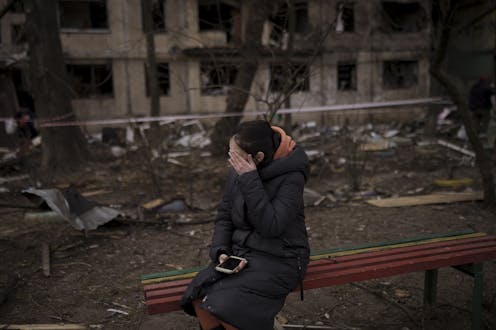
In 1942, a citizen of the southern Soviet Union city of Rostov-on-Don recalled its bombardment, documented in the book Rostov Under the Shadow of the Swastika by Vladislav Vyacheslavovich Smirnov:
“Bombs fell in the region of the city garden into a crowd of people. There were many corpses. They took the bloody jumble away on carts. It was difficult to watch! What was the target of such a bombing? It is difficult to say. There were not any kind of important war objects nearby. Maybe it was to intimidate people.”
This insight, generated during the Second World War as Rostov-on-Don was under attack by the German military, has come to mind while reading accounts of the ongoing war in Ukraine. As this citizen learned first-hand, foreign invaders attempting to capture a city put innocent civilians in particular danger by attacking the buildings where they congregate and go about their lives.
Today, we’re watching aerial attacks on Ukrainian cities hitting ambulances and medical facilities, university buildings, apartment complexes and civilian evacuation checkpoints.
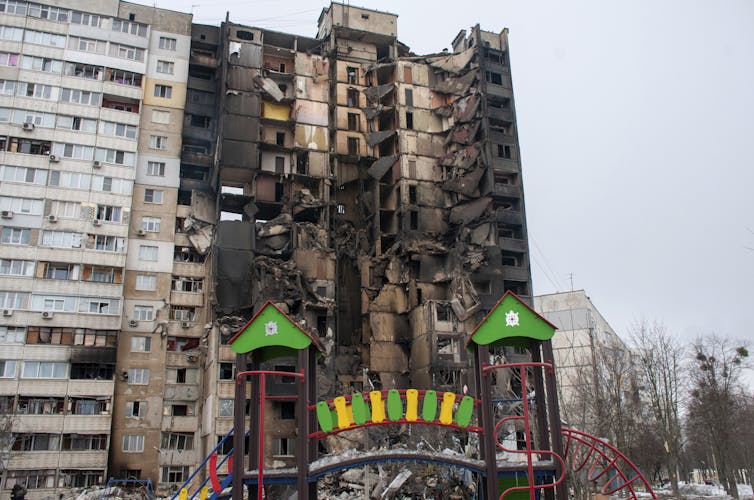
In cities throughout Ukraine, as residential streets and the central squares are bombed, inhabitants have been forced into shelters.
During the Second World War, the city of Kharkiv was the site of multiple separate battles over three years that raged around civilians. Soviet physicist Mark Azbel, who was born in Kharkiv, described returning to the city as a teenager in 1944, saying:
“Imagine: walking down any once-familiar street you see on either side almost no buildings at all; nothing but rubble.”
Many Ukrainians no longer have to imagine, just as their grandparents and great-grandparents did not have to.
Cities often bombed indiscriminately
We don’t need to look as far back as the Second World War to see the danger civilians face when their city is under attack. During the war in Syria — in which the Russian air force participated — the 2016 battle for Aleppo involved mass aerial bombardment of civilian targets like hospitals.
Within Europe, during the wars following the break-up of Yugoslavia in the 1990s, civilians in the Bosnian cities of Sarajevo, Tuzla and Gorazde were shelled.
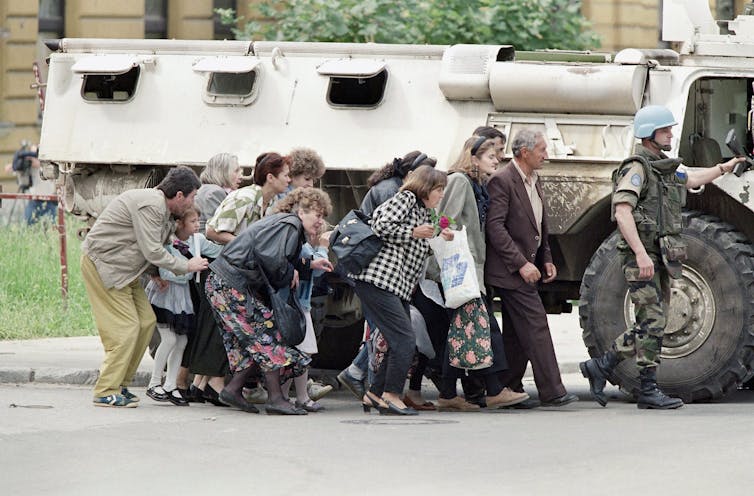
Putin has repeatedly hearkened back to the Second World War, claiming Russian troops are in Ukraine to “de-Nazify” and liberate the country, presumably for the benefit of Ukrainians. Many have already pointed out how ludicrous that argument is.
Read more: Putin's claim to rid Ukraine of Nazis is especially absurd given its history
And ironically, the Russian army’s tactics are similar to the German invaders of the U.S.S.R. during the Second World War, not the Soviet defenders. It’s Russian forces creating civilian terror on a scale not seen in eastern Europe since the 1940s, under the auspices of taking up the mantle of the Soviet fight against Nazism.
If Putin really wanted to learn a lesson from Ukrainian and Russian experiences of the Second World War, he could have taken this one to heart: innocent civilians die when invaders attack cities, and those invaders will be correctly blamed and demonized by the population.
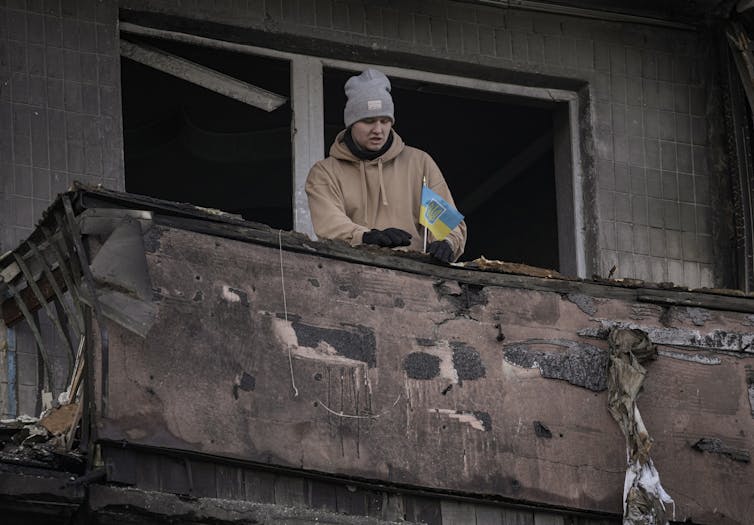
Shifting troop behaviour
Civilian experiences are also affected by how protracted an invasion becomes.
My own forthcoming research into violence against Soviet civilians during the Second World World has revealed that when enemy troops arrive and depart — periods of invasion and retreat — danger is heightened for civilians because that’s when indiscriminate violence is most likely.
Military behaviour shifts, often becoming increasingly restrained, when troops feel securely in control of a city. With this in mind, it doesn’t bode well for civilians that invading Russian troops are moving more slowly than they expected and find themselves involved in drawn-out engagements with a resilient Ukrainian military.
Evidence, including a prematurely published Russian-language news article from Feb. 26 celebrating a rapid Russian victory, suggests the invaders didn’t anticipate facing so much resistance. During the Second World War, increasing German military frustration — brought on by unexpectedly fierce Soviet military responses — resulted in rising civilian casualties during invasions.
Today in Ukraine, now in the midst of a full-scale war, escape also becomes increasingly difficult for non-combatants. Almost three million have already been forced to flee, but evacuations are increasingly complicated in many cities under heavy Russian attack.
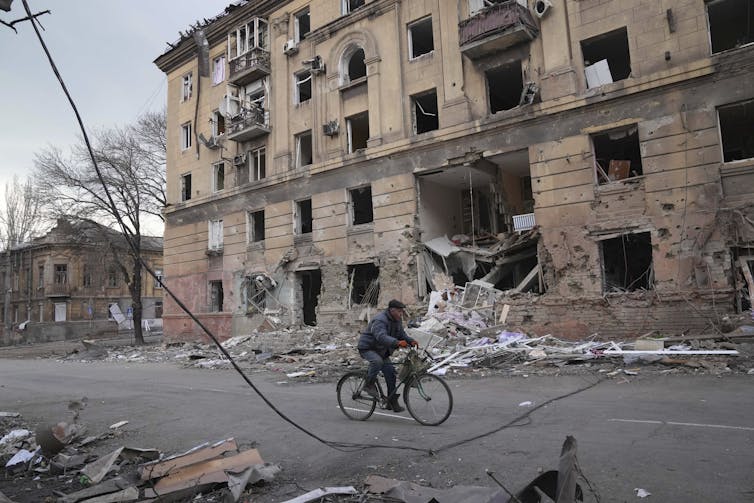
Temporary corridors for civilian retreat were negotiated during talks between Ukrainian and Russian officials on March 3.
But southeastern Ukrainian cities like Mariupol have been unable to evacuate their residents, or even gain access to much-needed food and medicine, because the promised Russian ceasefire has not materialized.
No pause in attacks
The apparent unwillingness of Russian troops on the ground to pause their attacks suggests avoiding civilian casualties is not, in practice, a high priority. In recent days, evacuation from the city of Sumy has become possible, but residents of multiple other cities, including Mariupol, remain trapped.
On March 9, a maternity hospital in the city was hit by an airstrike, ultimately killing the pregnant woman at the centre of an iconic photo of the carnage.
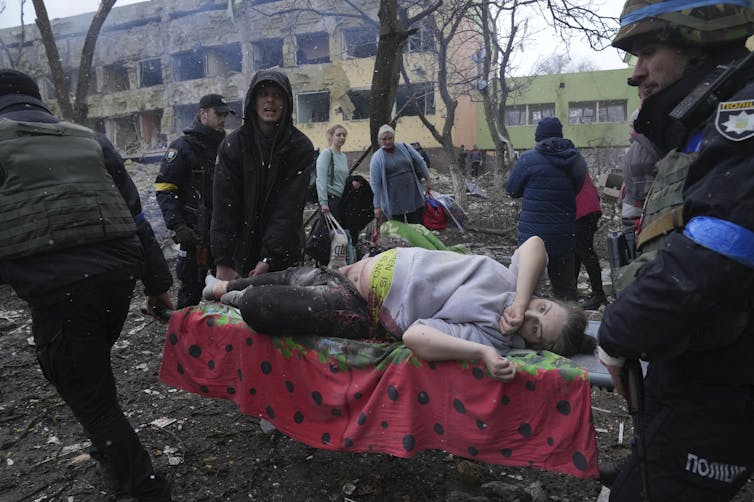
Looking at past experiences of warfare reinforces the urgency of creating and maintaining options for civilian evacuation wherever possible. But those experiences also suggest civilians are increasingly likely to bear the brunt of the growing frustration of Russian troops as the conflict stretches on.
The longer this war lasts, the greater danger civilians specifically may face, particularly residents of those cities besieged by Russian invaders.
Maris Rowe-McCulloch has received funding from the Social Sciences and Humanities Research Council of Canada, the Holocaust Education Foundation, and the Association for Jewish Studies.
This article was originally published on The Conversation. Read the original article.







